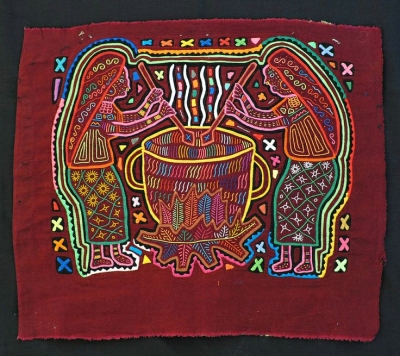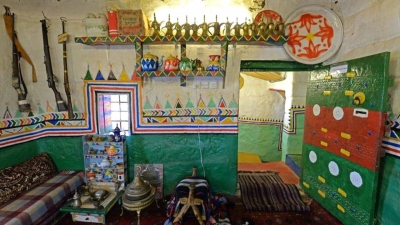Play of geometry and layers

The intricate mola panels of Panama are created by the indigenous people of Kuna, using the reverse applique technique.
There was a time when the indigenous Kuna people of Panama wore little clothing and covered their bodies instead with elaborate and colourful body art. With the passage of time, when they began wearing clothes, they transferred the workmanship to their textiles, giving rise to the handmade textile art of mola.
Mola panels are made using the reverse applique technique. Layers of different-coloured cotton cloth (up to seven layers) are sewn together. Then each layer is cut out in a pattern, revealing the cloth underneath. The largest pattern is cut out from the topmost layer, with progressively small designs being cut out from the lower layers. The edges of each layer are folded and sewn down with fine, almost invisible stitches. The beauty of the mola lies in the intricacy of the design and the finesse of the sewing.
Molas are characterised by vibrant colours and complex geometric patterns. They are often hailed as 'living history books' as the designs reflect the Kuna symbols of nature and their culture. The traditional costume of the Kuna woman includes a blouse adorned with mola panels.
FACT FILE
*Molas are characterised by vibrant colours and complex geometric patterns.
*They are often hailed as ‘living history books’ as the designs reflect the Kuna symbols of nature and their culture.
Picture Credit : Google
